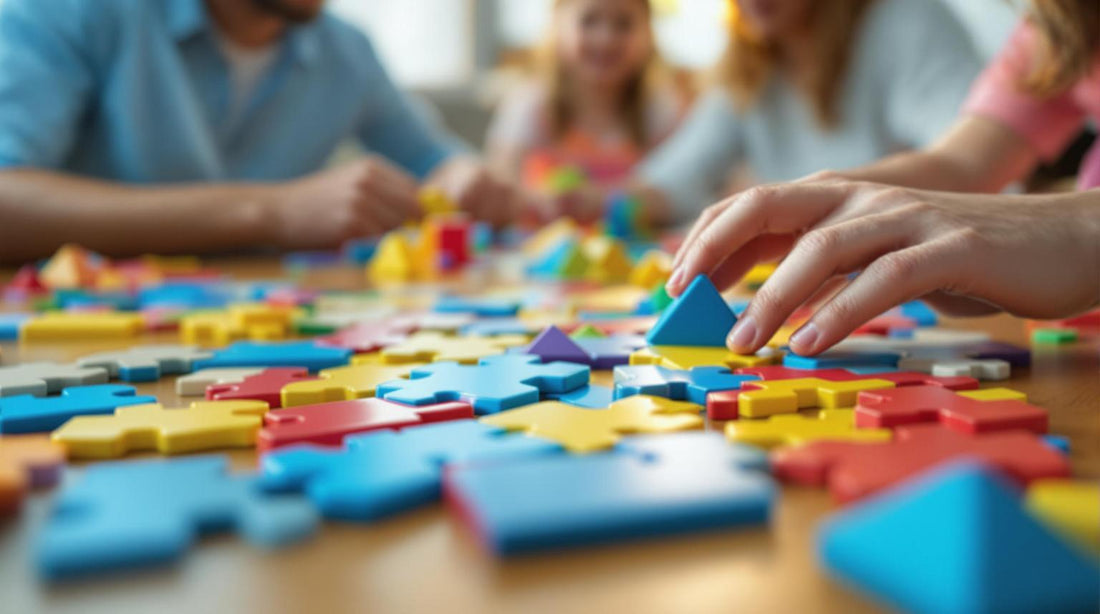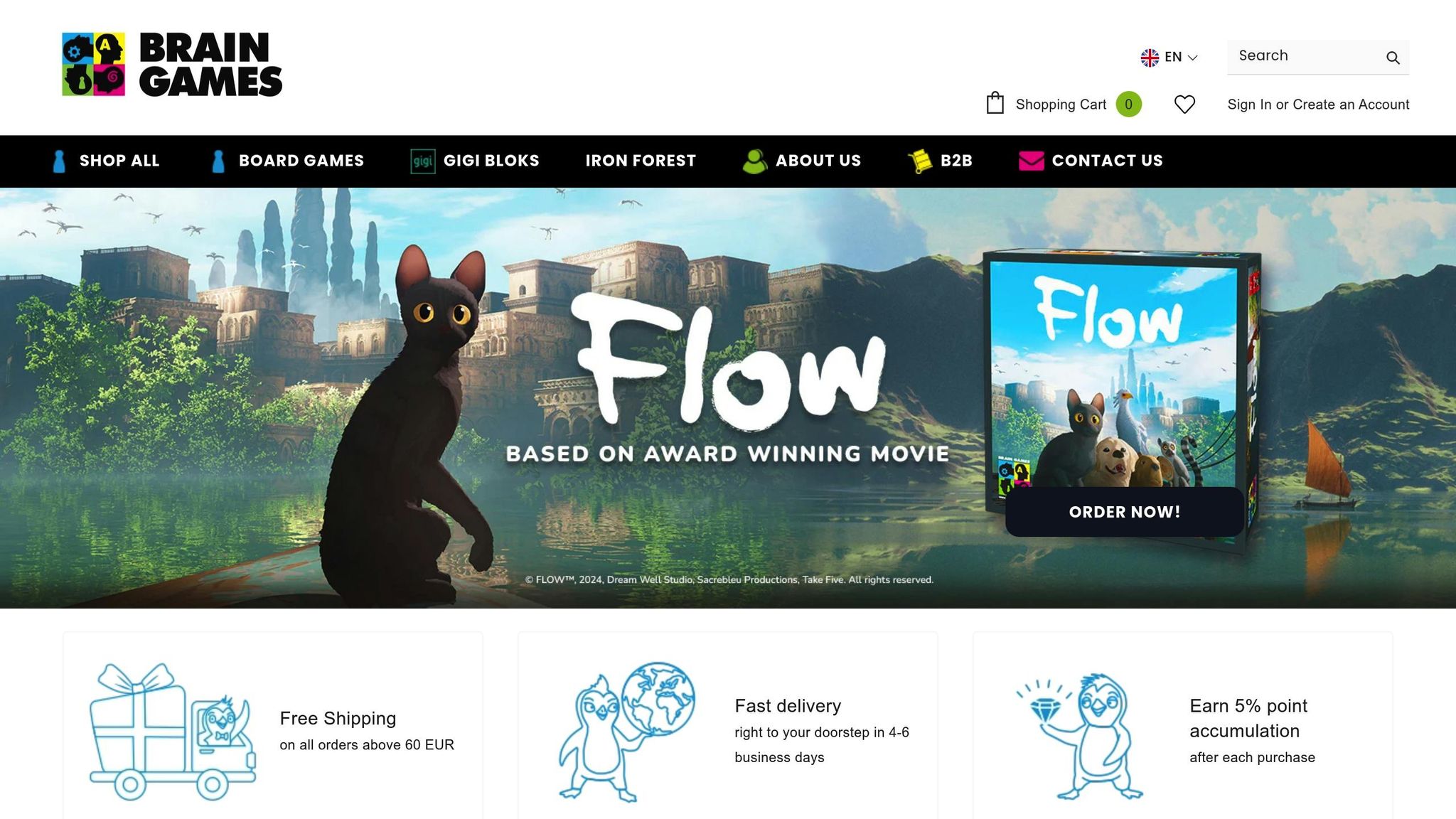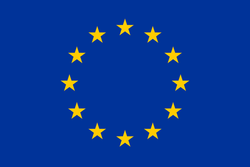Discover the Best Board Games for Every Player

How Geometric Puzzles Improve Spatial Reasoning
Geometric puzzles are a fun way to sharpen your brain. They help improve spatial reasoning - a skill that lets you visualize and manipulate objects in 2D and 3D. This skill is critical for daily life (like rearranging furniture) and careers in STEM fields. Here's why puzzles matter:
- Key Benefits: Boost mental rotation, spatial visualization, and logical thinking.
- Who Benefits? Everyone - from toddlers learning shapes to adults improving memory and problem-solving.
-
Research Findings:
- Kids who play with puzzles show 50% better spatial skills.
- Adults solving puzzles daily improve visuospatial cognition and may delay dementia.
- Puzzle Types: Tangrams, Pentominoes, and 3D construction sets are great for different age groups.
Want to strengthen your brain? Start solving puzzles today to improve spatial skills, logical reasoning, and memory.
Research on Puzzle Effects
Major Study Results
A study involving 53 parent–child pairs (children aged 2–4) revealed that 50.9% of children who engaged in puzzle play demonstrated better spatial transformation skills. Another study with kindergarteners found that teacher-guided block play led to higher Block Design scores on the WISC-IV assessment. These findings suggest that puzzle-related activities can positively influence spatial reasoning across various age groups.
Evidence suggests spatial skills are malleable and can improve with practice. – Kinnari Atit, Assistant Professor of Education at UC Riverside
Common Research Findings
The PACE study focused on adults aged 50 and older, showing that solving jigsaw puzzles for one hour daily over five weeks improved visuospatial cognition. Puzzles are particularly effective because they are engaging, adaptable for solo or group play, require no digital tools, and provide an affordable way to train the brain.
A historical example, the Bridges of Konigsberg puzzle by Leonhard Euler, asked participants to find a path crossing seven bridges exactly once. This 18th-century puzzle ties into modern research, further emphasizing the cognitive benefits of puzzle-solving.
The table below highlights key findings across different age groups:
| Age Group | Key Research Findings | Observed Benefits |
|---|---|---|
| Preschool (2–4 years) | 50.9% showed improved spatial skills with puzzle play | Better 2D shape transformation skills |
| Kindergarten | Structured block play improved WISC-IV scores | Improved spatial reasoning and problem-solving |
| Adults 50+ | Daily 1-hour puzzle solving improved cognition | Enhanced visuospatial skills and reduced cognitive decline |
Improving children's spatial thinking at a young age may not only help foster skills specific to spatial reasoning but also improve symbolic numerical representations. – Susan Levine, Stella M. Rowley Professor in Psychology at UChicago
Mental Skills Developed Through Puzzles
3D Rotation and Visualization
Geometric puzzles help train your brain to mentally manipulate objects. Studies show that practicing puzzles improves mental rotation - the ability to rotate 2D and 3D objects in your mind. This happens by forming, rotating, and comparing mental images, which strengthens this skill over time.
Interestingly, fMRI scans reveal that the right posterior parietal lobe of the brain becomes highly active during these tasks. The harder the puzzle, the more intense the brain's response.
"Mental rotation is a fascinating cognitive ability that allows us to manipulate objects in our mind's eye." - Claire Anderson, Marketing Expert
Logic and Pattern Recognition
Beyond mental rotation, puzzles are great for honing logical thinking and spotting patterns. Different types of puzzles focus on specific reasoning skills:
| Puzzle Type | Core Skills Developed | Problem-Solving Application |
|---|---|---|
| Shape Grid Puzzles | Spatial deduction | Placing shapes while following grid-based constraints |
| Shikaku Puzzles | Area calculation | Dividing space into specific rectangular sections |
| Zukei Puzzles | Pattern connection | Connecting dots to form accurate geometric shapes |
These puzzles push you to think analytically, working within rules while coming up with creative solutions.
Memory Training Effects
Solving geometric puzzles regularly also boosts memory and speeds up mental processing. They enhance visual memory, pattern recognition, and the ability to process visual information effectively.
Research even suggests that frequent puzzle-solving can delay dementia by about two and a half years. The focused attention required for solving puzzles also improves cognitive flexibility, which is essential for tackling new challenges and solving problems creatively.
Puzzles in Education
Early Learning Applications
Geometric puzzles play a key role in developing visual processing and organizational skills in young children. Studies show that engaging in early puzzle activities helps improve spatial abilities, laying a foundation for future learning.
Teachers can incorporate puzzles into targeted activities to boost specific skills:
| Age Group | Activities | Skills Focused On |
|---|---|---|
| Toddlers (2–3) | Shape sorters, inset puzzles | Recognizing shapes, improving hand–eye coordination |
| Preschool (3–5) | Building blocks, interlocking shapes | Understanding spatial relationships, enhancing fine motor skills |
| Early Elementary | 3D construction sets, pattern blocks | Strengthening spatial reasoning and problem-solving |
Research also highlights a connection between spatial reasoning and early language development, showing how these skills grow alongside physical and cognitive milestones.
STEM Learning Support
Geometric puzzles aren't just for early development - they also support academic success in STEM fields. By enhancing problem-solving skills, puzzles provide a hands-on way to learn complex concepts. Game-Related Assessments (GRAs) used in STEM education show a strong link (r = 0.30) between puzzle-solving and traditional cognitive ability measures. This reinforces findings that puzzles boost overall cognitive performance.
Teachers use puzzles in various STEM areas, such as:
- Introducing geometry concepts
- Supporting 3D construction in engineering
- Incorporating digital puzzle platforms in tech education
- Exploring symmetry in science lessons
These activities make abstract STEM topics more engaging and accessible for students.
Long-term Brain Health
The benefits of puzzles extend well beyond the classroom. Regular puzzle-solving has been shown to improve memory, reasoning, and dopamine production, which enhances mood, focus, and mental clarity. It may even slow cognitive decline as individuals age.
Educators often suggest incorporating puzzles into daily routines to build mental flexibility and problem-solving skills. Over time, this practice can foster lifelong learning habits that help maintain mental sharpness well into adulthood.
sbb-itb-1ed942f
Puzzle Types and Selection Guide
Puzzles by Age Group
Choosing puzzles based on age can help develop specific skills suited to different stages of growth. Each age group benefits from puzzles designed to match their cognitive and motor abilities.
For toddlers, the Hape Geometry Puzzle offers simple shape cutouts and two-piece combinations to introduce spatial concepts. School-age children can try Tangrams, which encourage spatial visualization and pattern recognition. Teens and adults might enjoy more challenging options like:
- Pentomino puzzles (12 pieces, $52.00)
- Soma Cube sets (7 pieces, $48.00)
- Advanced geometric logic puzzles, such as Shikaku or Area Mazes
Puzzle Comparison Chart
| Puzzle Type | Skill Level | Key Benefits | Pieces | Price Range |
|---|---|---|---|---|
| Shape Sorters | Beginner (1–3 yrs) | Develops shape recognition and coordination | 5–10 | $9.99–15.99 |
| Tangrams | Intermediate (6+ yrs) | Enhances 2D spatial reasoning and patterns | 7 | $28.00–52.00 |
| Pentominoes | Advanced (12+ yrs) | Improves complex spatial planning and problem-solving | 12 | $48.00–52.00 |
| Soma Cubes | Expert (14+ yrs) | Builds 3D visualization and strategic thinking | 7 | $48.00–52.00 |
Shop at Brain Games

Use the chart above to find puzzles that suit your skill level. Brain Games offers a wide range of geometric puzzles, from beginner-friendly options to advanced challenges. Their collection includes both classic wooden designs and modern variations aimed at improving spatial reasoning.
For those just starting out, Brain Games suggests their Player Subscription Puzzle Box ($41.99), a beginner-friendly introduction to geometric problem-solving. As you improve, you can explore their Explorer and Thinker subscription tiers, which feature progressively harder puzzles rated from Level 1 (Easy) to Level 5 (Extreme).
What Do Puzzles do to Your Brain? A Neurology Expert Explains
Summary and Next Steps
A 2012 study by Ayaz et al. showed that solving geometric puzzles activates the right hemisphere and prefrontal cortex, especially during failed attempts. This brain activity supports skills like executive planning and visual reasoning.
The benefits of geometric puzzles span several cognitive areas:
- Brain Development: Solving these puzzles engages key brain regions tied to spatial processing and problem-solving.
- STEM Success: There’s a strong link between the skills gained from puzzles and achievement in math and STEM fields.
- Early Skill Building: Early exposure to puzzles predicts stronger spatial skills in preschoolers.
"Geometric thinking provides tools for understanding physical attributes of the space we inhabit and the things within it. Children use geometric thinking to solve problems through manipulation (both mental and real) of objects and representations of those objects in their environments. In the process, they notice important geometrical patterns and relationships." – Linda M. Platas, DREME TE
To get started:
- Begin with simple tools like shape sorters and tangrams to establish foundational skills.
- Move on to intermediate puzzles like the Pentomino Set, which includes 65 progressive challenges.
- Incorporate daily spatial exercises, such as mental rotation tasks.
- Use spatial language during activities to reinforce key concepts.
Research also highlights that successful puzzle-solvers often try multiple solution paths. Platforms like Brain Games (https://brain-games.com) offer tiered systems, guiding users through increasing levels of difficulty, from Player to Explorer to Thinker. This keeps the process engaging while ensuring steady skill growth.
These findings underline the value of including geometric puzzles in daily routines to boost cognitive development for all age groups.






